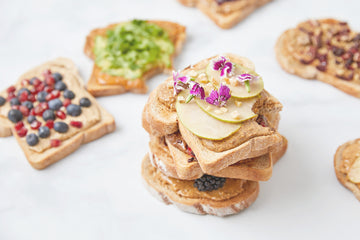"One swallow will not make spring, nor one bee honey." - Traditional Proverb

Our honey supplier, Heidi's Honey & Maple Syrup, sent us some great (and new to us!) information about bees this week we thought we'd share. Did you know that the most essential part of the beehive isn't honey or pollen brought in from the outside. It’s what the bees create on the inside: Beeswax. Without the beeswax, nothing else matters; it's the foundation for everything else in the hive.
Bees create their comb from the wax. This comb holds the brood (baby bees) and the foodstuffs like honey, pollen and bee bread, which they use to feed themselves and the queen. What is most astounding is that honeybees create the beeswax from their own bodies. When temperatures are between 91-96 degrees Fahrenheit and when they have eaten large amounts of honey, the workers have wax glands that are able to secrete little irregularly shaped ovals of wax . They then handle and manipulate it with their forearms and mandibles to affix it to the cell. It takes about 4 minutes for one bee to complete this process. It is thought that the honeybee’s level of protein in her body from consuming pollen and bee bread helps in the production of the wax, too. Without high to moderate protein levels, the bee’s ability to create wax diminishes greatly.
Therefore, it all comes back to how the outside world that we, as humans create, can benefit or might be inadvertently harming our honeybees. Environments that have more than 80% native plants (the tipping point for losing insect and animal diversity), that have an abundance of pollen and nectar during all four seasons, and that have not been sprayed with insecticides or fungicides, protect the honeybees’ ability to create the wax to store their brood and foodstuffs that help them thrive. And they greatly reward us by pollinating our food plants and sharing their nutritious honey with us!
Photo by Meggyn Pomerleau, Unsplash.

